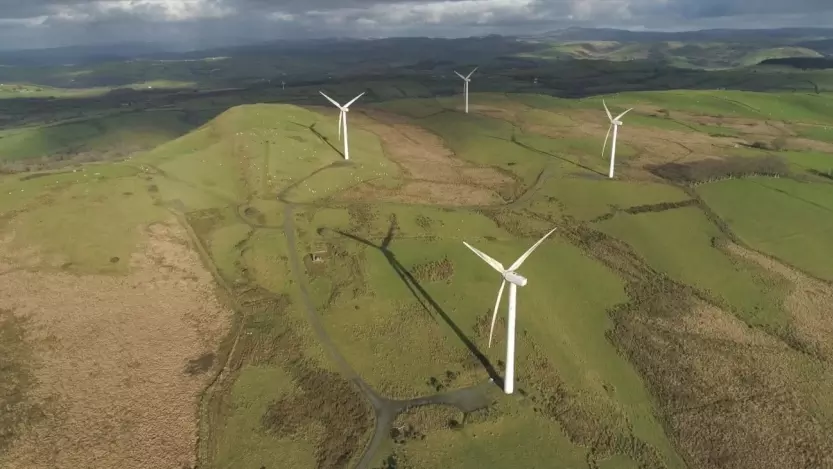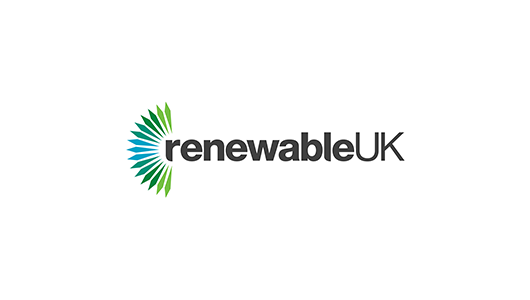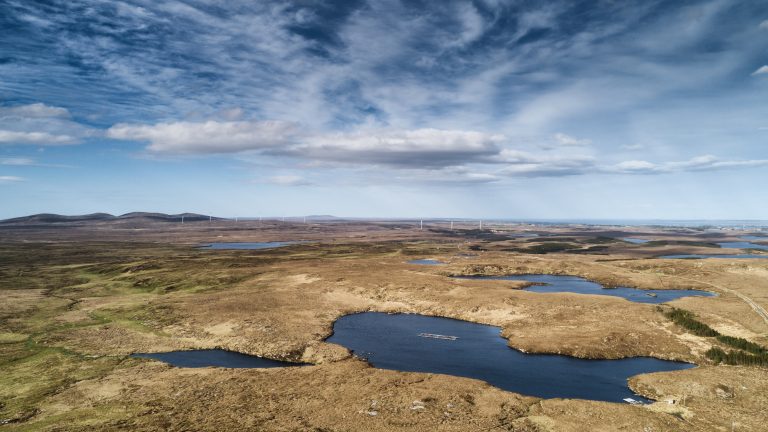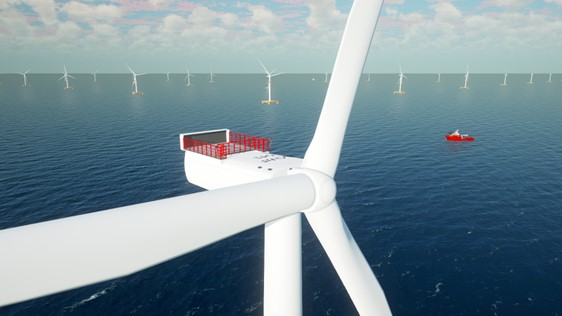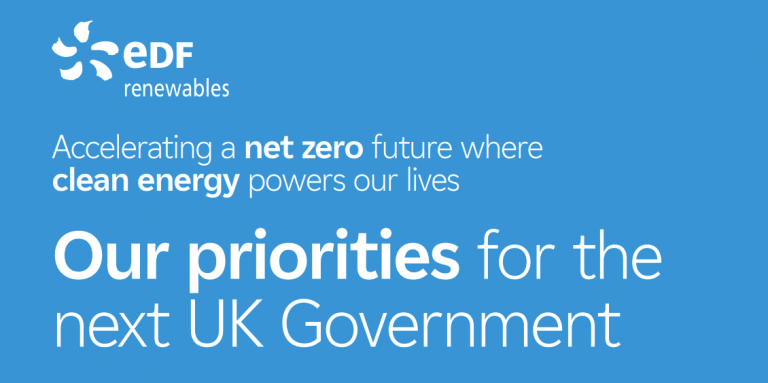
From its plentiful rivers to jaw-dropping mountains and sunshine coast, Wales is blessed with an abundance of natural renewable resources. Our first wind farms began operating nearly 20 years ago in mid-Wales. And now we’re ramping up our presence in the country – with plans to develop 1 GW of clean energy projects – to support Senedd Cymru’s (the Welsh Government’s) ambitious plans to achieve net zero by 2050.
Tackling climate change is firmly on the political agenda in Wales. In 2019, the National Assembly for Wales became the first parliament in the world to declare a Climate Emergency. Then in March 2021, Senedd Cymru approved a net zero target for 2050.
Key to this is introducing more renewable energy into the mix and Wales’ target is for Welsh renewables to generate electricity equal to 70% of Wales’ consumption by 2030 – up from 50% in 2018.

Our presence in Wales

“We’ve been a long-term owner and operator of wind farms in Wales,” says Simon Morgan, our Principal Project Development Manager for Wales. Cemmaes, an 18-turbine wind farm near Machynlleth, was commissioned in 2002. While Llangwyryfon, near Aberystwyth, began operating in 2003. Together, these projects generate enough clean energy to power around 14,000 homes.*
Simon joined the business at the start of 2020 to drive forward our investment in the country. He says: “We’ve an expanding pipeline of onshore wind and solar projects and are committed to our investment in the country. “We have an aspiration to deliver 1 GW of renewable projects in Wales by 2030.”
“To put that into context: this represents an investment of £1bn in the country,” he adds. “It would realise 2,000 jobs and provide in the region of £100m to local communities through our community benefit funds.”1
“We’re also committed to providing local communities the opportunity to own a stake in projects we develop,” continues Simon. “For instance, with our proposed Garn Fach wind farm (see below) we’re offering the local community the opportunity to own up to 10% of the project.”
Local ownership gives the communities living near our renewables sites a stake in our projects and an additional revenue stream. While helping the Welsh Government achieve its target for 1 GW of renewable energy capacity in local ownership by 2030.
New announcements
In January 2020, we announced plans for our first development site in a number of years: the Garn Fach wind farm in Powys. This 17-turbine site will have an installed capacity of around 85 MW, capable of powering up to 69,000 households.2
One year after our Garn Fach announcement, we acquired Porth Wen on Anglesey, our first solar project in Wales. This planned 49.99 MW solar farm could meet the electricity requirements of up to 9,500 homes*. With planning already consented, construction is likely to begin in 2022, with the site fully commissioned by the end of the year.
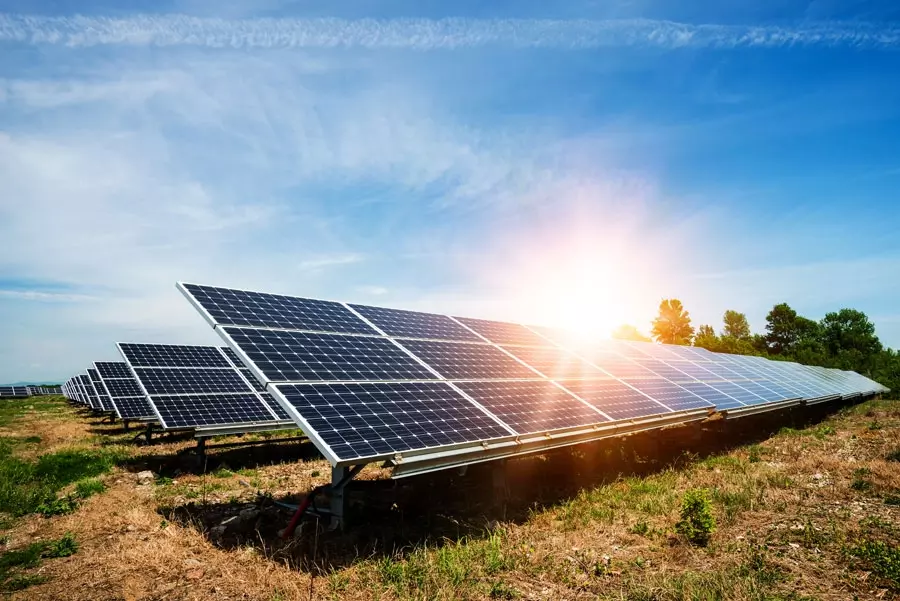
A fit-for-purpose grid in Wales
Following COP 26, government action on climate change is under the spotlight – and it’s no exception in Wales.
“We welcome the Government’s support for onshore wind and solar, and the policy context for how projects will be consented,” says Simon. “We also welcome the review of electricity and gas networks that Julie James MS, the Climate Change Minister, has commissioned because we need a fit-for-purpose grid in Wales. If we’re to deliver our own targets – and support the Senedd Cymru in meeting its national goals – we need grid reinforcements.”
Future developments
In November, the Crown Estate announced plans to support floating offshore wind in the Celtic Sea. Simon says: “We’re excited about the Crown Estate’s announcements. The Celtic Sea represents a fantastic opportunity for floating offshore wind, which could play a key role in meeting climate change targets. There is also a significant economic opportunity for Wales through investment in ports and the creation of a local supply chain.”
Community benefit funds
Each renewable project in Wales also brings wider benefits for the community through a community benefit fund, which is paid for the lifetime of the project.
These can bring significant investment into local areas. For instance, Garn Fach wind farm could have a community benefit fund of £425,000 a year. There is already a community liaison group – formed from local representatives – set up to decide on how any community funds will be allocated.

Kerry MacPhee is our Community Liaison Officer and has been working closely with the communities in Anglesey to set up their local community liaison group for delivering the community benefit fund linked to Porth Wen solar farm.
“It’s up to local communities to determine how they allocate their funds,” she explains. “So for Porth Wen, there is a £20,000 annual community benefit fund, with £10,000 of this ringfenced for two schools close to the Porth Wen project. In total, the project could deliver £300,000 to the two schools – and the same amount to the community – over its 30-year lifetime.”
Developing the natural environment
Any renewables project we invest in is designed to enhance local amenities and biodiversity. At Garn Fach, we’re putting in new footpath and cycle tracks across the sites, along with a visitor car park to make them accessible to the public. While at Porth Wen – an area that will still be used for sheep grazing – we’re putting in a mile-long wildlife corridor and new wildflower planting.
These improvements will allow for foraging, breeding opportunities and provide shelter for a variety of wildlife.
Jobs and investment in local areas
Then there are the wider benefits that come from building and operating a wind farm in a local area. Garn Fach will create 61 jobs in Powys during its lifetime. We’ve already contracted with 10 Welsh companies on project development and we’ve joined the Mid Wales Chamber of Commerce and Mid Wales Manufacturing Group, to bring our support to the region.
As with the Garn Fach project, the community around Porth Wen will benefit from local investment too. Kerry explains, “We want to use as much local content as possible. Whether that’s local natural materials when building the roads and access tracks, or using Welsh contractors. We plan to run ‘Meet the Buyer’ days and job fairs so we can engage local people in building and working on the project.”
Jamie Jones is an apprentice with EDF Renewables and halfway through his three-year programme. He’ll be working on our operational wind farms for the final year of his apprenticeship. “I’m from Aberystwyth and a patriotic Welsh person, so I couldn’t imagine working anywhere else,” he says.

“One of the main reasons I applied for the apprenticeship was because I wanted to do something to help tackle the climate emergency,” he continues. “Renewable energy can have such a positive impact, it makes the work so rewarding. This apprenticeship is the best career decision I ever made.”

